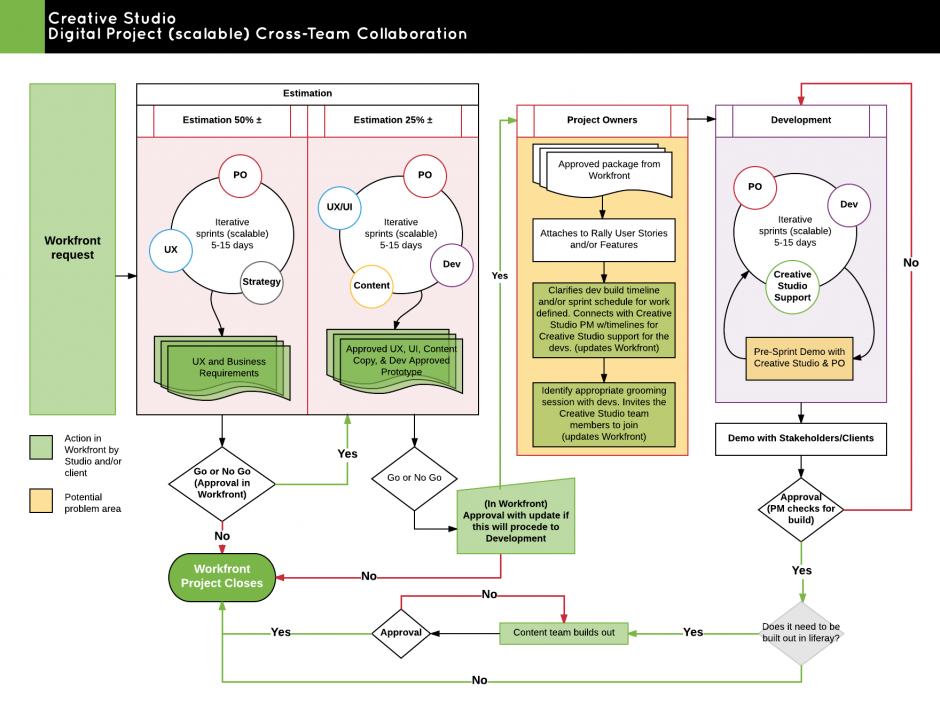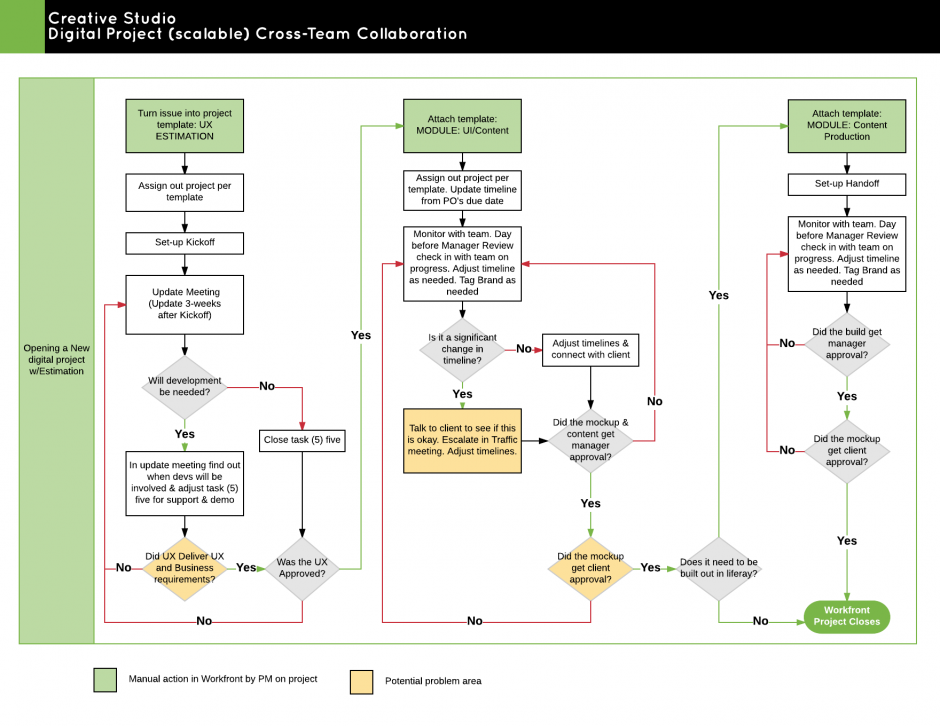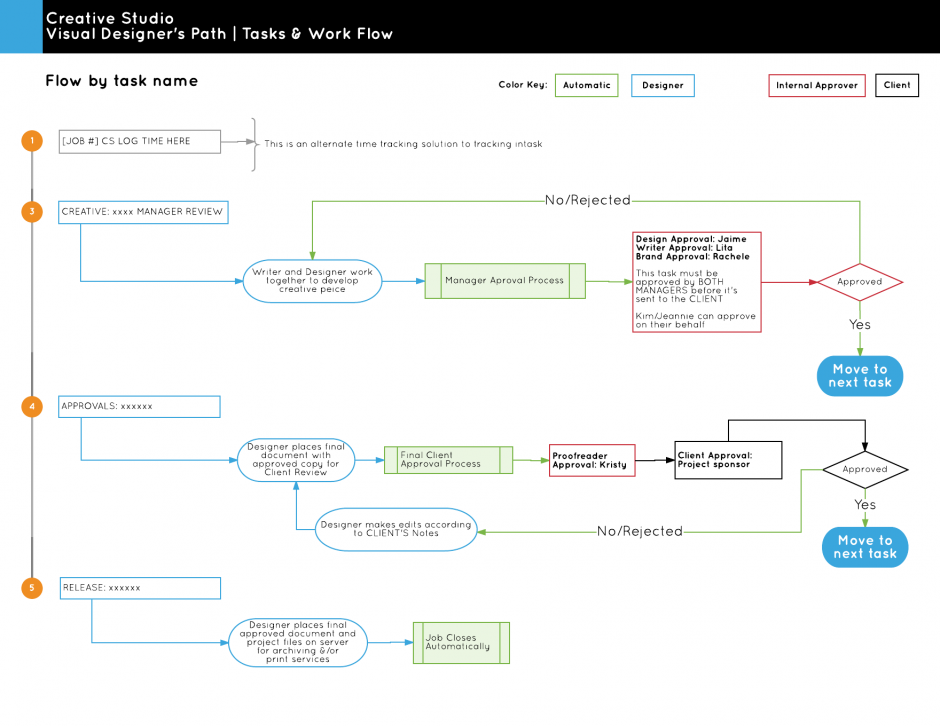Product Design: Cross Team Collaboration
Case StudyOverview
At this company it was my primary role to design a cross-team user-experience that allowed various levels of visibility into the digital design & development process while helping to streamline workflows.
Research
With a user experience that touched so many teams (five plus teams, over 40 team members) I knew I had to get perspective rather than rushing to solve the problem as there was no system set in place before I joined the team. I took three months of observing and researching how each team functioned before I attempted to synthesize the systemic and overarching issues.
I joined in with each dev team and helped to run sprints along with our UX/UI and Content teams. Once we got the UX/UI team out of the red for backlogged projects we started to define the problem.
Define
Problem: understaffed teams treated as dedicated resources in multiple teams when on a shared service team working on projects as production workers rather than problem solvers.
Pain points:
- Underutilized resources
- Overworked resources
- Unsatisfied resources
- Subpar design work
- No approval process
- No work filter – Overbooking on time
Ideate/Prototype/Build
Once we worked through a process that was the ideal process with the UX/UI team we started to roll it out to other teams. Unfortunately, the ideal process was not the ideal process for POs nor the other teams. We ended up iterating on the process for several months until we found a process that worked for each team. Currently, this process is being used as the standard for all mobile development and is slowly being adopted by our web teams.



Analyze
After successfully rolling out this process, we are now using similar version for our print department. This has dropped our average turnaround time from 40 days to 10 working days.
Challenges & Takeaways
The largest challenge was not the lack of existing process, it actually helped because no one expected much. The biggest challenge was connecting to the correct people to work through the processes for each team. The amount of turnover between teams meant consistent churn and training new employees from the ground up while they tried to add their own flair. This lead (leads) to lack of adoption until they come to the same takeaway, the amount of research which went into the process uncovered many solutions to the perceived problems lack of adoption creates. The other takeaway is to get process patterns and documentation into hands of employees as quickly as possible.
